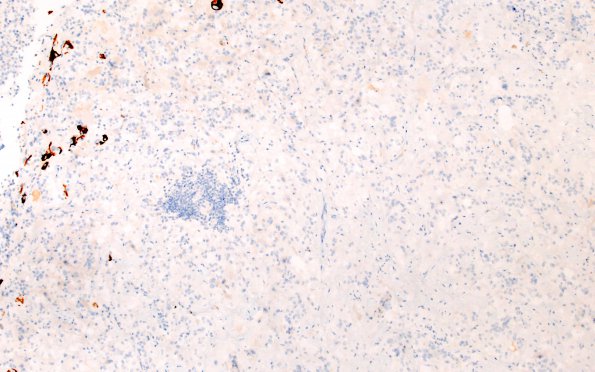Table of Contents
Washington University Experience | NEOPLASM (SELLAR) | Pituitary Adenoma - Pituitary Neuroendocrine Neoplasm | Plurihormonal | 8J4 PA & GGL diffn (Case 8) GFAP ggl 10X 2
Interestingly the gangliocytic area has only a few astrocytes at the margin of the specimen, a result which would be unlikely in a fragment of inadvertently included extraneous brain. (GFAP IHC) ---- Not shown: Ki67 is detected in tumor cells at variable density that ranges up to 5.2%. The parathyroid neoplasm is composed of large cells with abundant, finely vacuolated or granular pale eosinophilic cytoplasm. ---- Comment: The histological/immunohistochemical pattern of the material resected from the pituitary describes a plurihormonal growth hormone producing adenoma. This neoplasm is defined by co-expression of growth hormone, prolactin and thyroid stimulating hormone, all of which are regulated by transcription factor gene PIT-1; PIT-1 is, in turn, regulated by menin, the product of the MEN-1 gene. Focally, the tumor has undergone ganglion cell transformation, creating a component that resembles gangliocytoma; this feature, though rare, has been reported in pituitary adenoma in the literature and does not appear to be prognostically significant.

